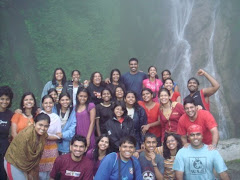King Sengge Namgyal who ruled Ladakh during 17th century and during whose rule Ladakh was at its greatest shifted his court from Shey to Leh. Leh became the regional capital and very soon the town blossomed into one of the busiest markets on the Silk Route. During the 1920s and 1930s, the broad bazaar that still forms its heart received more than a dozen pony- and camel-trains each day.
Leh's prosperity, managed mainly by the Sunni Muslim merchants whose descendants live in its labyrinthine old quarter, came to an abrupt end with the closure of the Chinese border in the 1950's. However its fortunes begin to look up after India rediscovered the hitherto forgotten capital's strategic value after two wars in quick succession with Pakistan . Today, Khaki-clad Jawans (soldiers) and their families from the nearby military and air force bases are the mainstay of the local economy in winter, when foreign visitors are few and far between.
Gates opened for Tourists
Indian government's decision in 1974 to open Ladakh to foreign tourists was a major shake-up. From the start, Leh bore the brunt of the annual invasion, as busloads of backpackers poured up the road Srinagar. Twenty or so years on, though the main approach is now via Himachal Pradesh rather than Kashmir, the summer influx shows no sign of abating.
Leh has doubled in size and is a far cry from the sleepy Himalayan town of the early 1970's. During July and August tourists stroll shoulder to shoulder down its main street, most of whose old style outfitters and provision stores have been squeezed out by Kashmiri handicraft shops, art emporiums and Tibetan restaurants. Around the Town
Around the Town
Leh has nonetheless retained a more tranquil side, and is a pleasant place to unwind after a long bus journey. Attractions in and around the town itself include the former Palace and Namgyal Tsemo Gompa, perched amid strings of prayer flags above the narrow dusty streets of the Old Quarter.
A short walk north across the fields, the small monastery of Sankar harbours accomplished modern Tantric murals and a thousand beaded Avalokitesvara (also spelt as Avalokiteshvara) deity.
Leh is also a good base for longer day trips out into the Indus Valley. Among the string of picturesque villages and Gompas within reach by bus are Shey, site of a derelict 17th century palace, and the Spectacular Tikse Gompa. Until one has adjusted to the altitude, however, the Only sightseeing one will probably feel up to will be from a guesthouse roof terrace or garden, from where the snowy summits of the majestic Stok-Kangri massif (6,120m), magnified in the crystal clear Ladakhi sunshine, look close enough to touch.

No comments:
Post a Comment